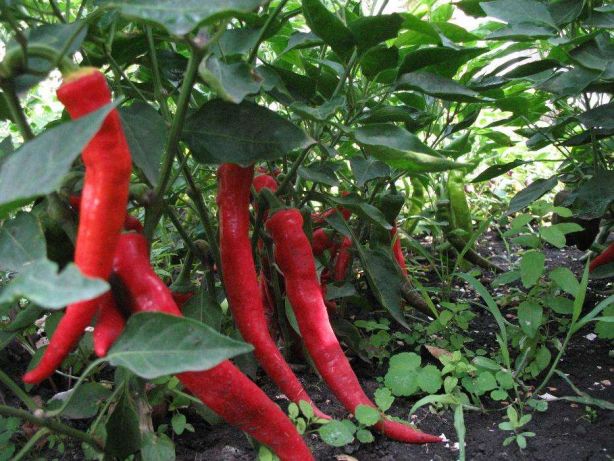 “Lambhorn” bitter pepper is a capricious variety that requires careful and constant care. If you follow all the recommendations for its cultivation, it can be grown in your homestead.
“Lambhorn” bitter pepper is a capricious variety that requires careful and constant care. If you follow all the recommendations for its cultivation, it can be grown in your homestead.
Content
- 1 Characteristics and description of the variety
- 2 Reviews of those who planted
- 3 Features of cultivation and care of the variety
- 4 Advantages and disadvantages of the variety
- 5 The main purpose of the variety
- 6 What regions are grown
- 7 Resistance to disease and adverse conditions
- 8 Storage rules
- 9 Winter preparations
Characteristics and description of the variety
When reading its description, many gardeners, amateurs will want to feast on hot peppers and will be able to purchase seeds in order to grow this variety in their garden.
Productivity
One bush gives an average of 60 fragrant fruits. Therefore, the yield from one bush will be 1.8 kg.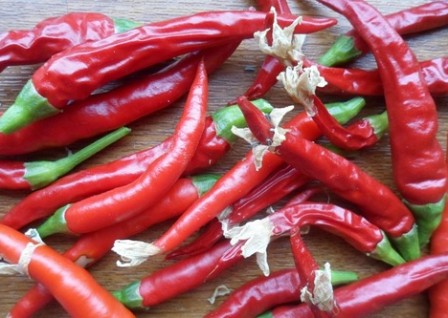
Height, plant weight, color, shape
The spreading bush height is 60 cm, while it is completely covered with elongated fruits of red pepper. Their shape is conical, the skin does not wrinkle and the fruit reaches 35 cm in length, respectively, the weight ranges from 30-35 gr. At the same time, pepper slightly bends along its length and resembles a ram's horn, which gave the name to the variety. The aroma of the fruits is pronounced, and they have a piquant spicy taste.
Ripening speed
A variety of medium-late ripening. It takes 145 days to fully mature the pepper from the moment of seed germination. Therefore, it is grown only with seedlings.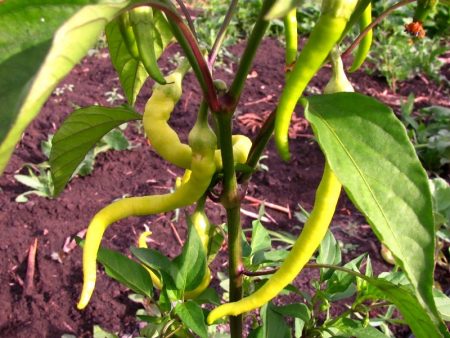
Seedling planting dates
Planting dates for each region of Russia are different, since the southern regions plant seedlings in open ground in early May, and seedlings of this pepper in the greenhouse are possible in mid-April. The northern regions, located at the latitude of the Moscow Region, grow pepper only in greenhouses and if it is not heated, then pepper is planted in it on the 20th of May.
Therefore, based on this, the seeds are sown 2.5 months before the required time, that is, the Krasnodar Territory will plant the seeds in early to mid-February.
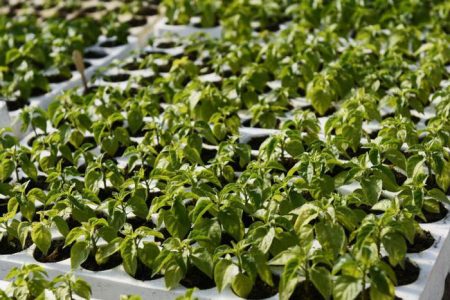
Reviews of those who planted
Antonina
This year, in the greenhouse, this variety has grown in my height almost 90 cm and was all strewn with the fruits of long pepper. The fruits were fragrant and with a pungent spicy taste. Well suited for the manufacture of various culinary dishes.
Arina
Well, a very productive variety. The bush was completely strewn with pepper fruits, so almost no foliage was visible. I plant it both in open ground and in a greenhouse I plant a couple of bushes. If the summer is warm, then it bears fruit in different places the same, but in the cold summer the greenhouse certainly helps out.
Vladimir
I always grow many different varieties of hot peppers on my site. Since then I sell it on the market. What can I say about Ram's horn, it always gives a consistently large crop of wonderful hot pepper, which is in demand among the population. So this variety is a regular guest in my garden.
Features of cultivation and care of the variety
Grow this sort of pepper begins with sowing seeds. And in order for the seedlings to be healthy, you must adhere to these recommendations: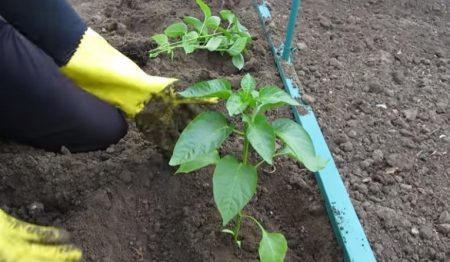
- Seeds are planted only in soil rich in nitrogen and at the same time it must be loose in order to pass oxygen to the growing root system.
- The container should have openings for draining excess water after irrigation.
- Seeds before sowing are checked for germination and disinfected.
- Seeds are laid out in moist ground and covered with clear glass or a bag. This will help improve seed germination conditions.
- At this time, planted seeds need an air temperature within 25 degrees Celsius.
- When friendly shoots appear, the air temperature is lowered to 18 degrees Celsius and the cover is removed from the bowl.
- At this time, it is necessary to highlight the seedlings so that it does not stretch. For this, special lamps for plants are used.
- For growing seedlings, it is necessary to monitor and conduct timely watering, turning it in different directions to the sun's rays.
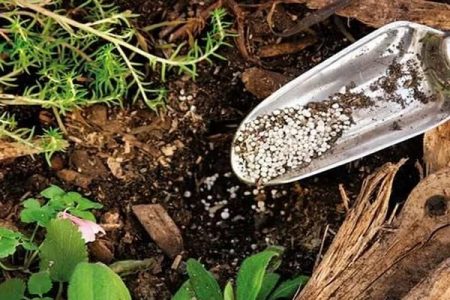
IMPORTANT! Water the seedlings with warm water and by immersion.
Before moving the seedlings to a permanent place on the street, it must be hardened. Hardening is carried out for 10 days, gradually accustoming seedlings to street conditions.
Wells for transplanting seedlings of this variety of hot pepper are dug out according to a 50x60 cm pattern.
Advantages and disadvantages of the variety
Like all the different varieties, this pepper has positive and negative qualities.
Positive:
- excellent marketable fruit;
- piquant taste;
- high productivity from one bush;
- good germination of seeds.

Negative:
- for a good harvest he needs a lot of heat and timely watering.
The main purpose of the variety
The fruits of this variety are universal. They are used in the preparation of various culinary dishes:
- lecho;
- serves as a seasoning for meat;
- serves in the manufacture of various marinades.
What regions are grown
It can be grown everywhere, but in the northern regions only in greenhouses. Since air cooling will lead to the death of a bush of hot pepper.
Resistance to disease and adverse conditions
The mutton horn variety is well resistant to various fungal diseases. But this must be monitored, since especially in a greenhouse with its hot and humid climate, sometimes the plant can be affected by a fungal disease. To prevent this from happening:
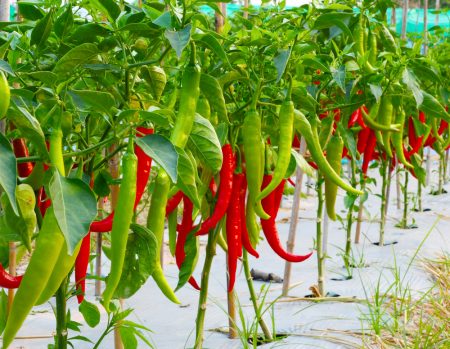
- ventilate the greenhouse after each watering;
- to plant plants according to the accepted planting scheme;
- treat bushes with folk remedies for protection against fungal diseases.
When the environment becomes unfavorable for growing peppers, care must be taken to ensure that the air temperature in the greenhouse does not drop, otherwise the pepper may become sick and die.
Storage rules
Hot peppers are well stored on the bottom shelf of the refrigerator in a plastic bag. But with such storage there is a need to ventilate the fruits so that they are not struck by gray rot. In this case, the pepper will be stored until March. Hot peppers are also threaded and dried. In this case, the room where the pepper will be stored should be dry.
Winter preparations
A couple of bushes, some gardeners are planted in large containers and then, when cold weather sets in, they are brought into the room. And in the fall, with a lump of land, you can carefully remove the bush from open ground and transplant it into a large bucket capacity and then bring it into the room. In this case, it continues to bear fruit until spring.
This pepper has not so many lovers, but it is necessary in the household, as with it they cook various dishes that the whole family will eat with pleasure.




 Calorie pepper stuffed with meat and rice - BZHU per 100 grams
Calorie pepper stuffed with meat and rice - BZHU per 100 grams Gorky pepper - the best varieties for open ground
Gorky pepper - the best varieties for open ground Hot pepper seeds - the best varieties for open ground and reviews
Hot pepper seeds - the best varieties for open ground and reviews Capsicum tincture for hair - how to use and reviews
Capsicum tincture for hair - how to use and reviews